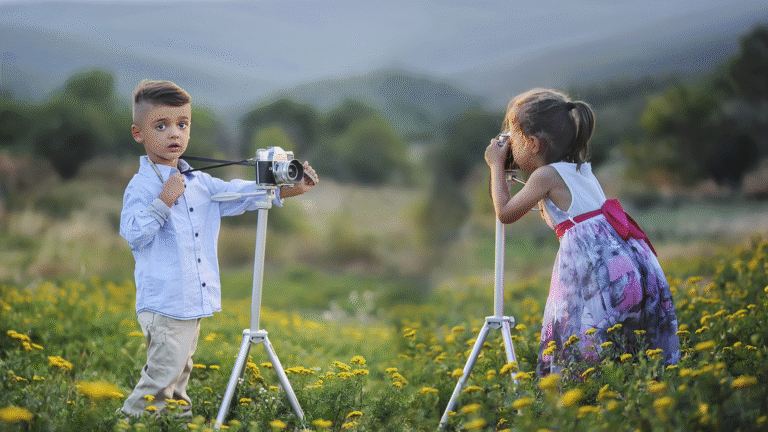Travelers often find themselves torn between the thrill of adventure and the need for relaxation. To achieve a perfect travel itinerary, it is essential to strike a balance between exhilarating activities and restful moments. A well-structured plan can enhance the overall experience, ensuring both excitement and rejuvenation.
Incorporating both elements allows for a more fulfilling journey. Planning adventurous outings, such as hiking or exploring local attractions, alongside downtime for relaxation—like spa visits or strolls—can create a harmonious experience. By allocating specific time for each aspect, individuals can return from their travels feeling enriched rather than exhausted.
Ultimately, successfully balancing adventure and relaxation involves prioritizing activities that complement each other. Thoughtful planning that includes a mix of engaging experiences and moments of peace can transform a typical trip into an unforgettable escape.
Understanding Your Travel Style
Recognizing one’s travel style is essential for crafting a fulfilling itinerary that incorporates both adventure and relaxation. Each traveler has unique preferences that influence how they engage with their surroundings and companions.
Identifying Your Adventure and Relaxation Needs
Travelers should begin by evaluating what types of experiences excite them. Some may crave adrenaline-pumping activities like hiking or zip-lining, while others might prefer serene moments at a beach or spa.
List of Adventure Needs:
- Thrill-seeking activities
- Cultural explorations
- Nature hikes
List of Relaxation Needs:
- Spa visits
- Leisurely meals
- Scenic views
Creating a balance involves noting these preferences down. Prioritize activities that fulfill both adventuring and relaxing needs to ensure a satisfying experience.
Assessing Travel Companions’ Preferences
Companions significantly influence travel dynamics. It’s important to discuss individual expectations before finalizing the itinerary. By identifying each person’s desired mix of adventure and relaxation, the trip can cater to all participants.
Key Questions to Discuss:
- What activities are a must for each traveler?
- How much downtime is necessary to recharge?
- Are there specific locations that appeal to group members?
This conversation can reveal common interests and help find a compromise, allowing everyone to contribute to the itinerary while fostering a cohesive travel experience.
Balancing High-Energy Activities with Downtime
Creating a travel itinerary that integrates both high-energy and low-key activities is essential for maintaining energy levels throughout the trip. Experiences should be planned so that intense days are followed by more relaxed ones.
Suggested Itinerary Structure:
- Day 1: Outdoor adventure (e.g., hiking)
- Day 2: Rest (e.g., spa day)
- Day 3: Cultural activity (e.g., museum visit)
Transitioning between stimulating and calming pursuits will keep the experience refreshing. Establishing periods for rest will allow for the enjoyment of both aspects of travel without feeling overwhelmed.
Planning a Balanced Itinerary
Creating a balanced itinerary involves a thoughtful mix of adventure and relaxation. It is essential to conduct thorough research, strategically schedule downtime, and incorporate flexibility to accommodate both active pursuits and leisurely moments.
Researching Destinations for Adventure and Leisure
He or she should begin by exploring a variety of destinations that offer both thrilling activities and peaceful retreats. Websites, travel blogs, and local tourism boards provide insights into different locations. It’s beneficial to look for hidden gems that might not be crowded but offer unique experiences.
Utilizing travel forums or social media can uncover recommendations from fellow travelers. This helps identify must-do activities such as hiking, biking, or cultural tours, along with places to unwind like parks, cafes, or spas. A well-researched destination can significantly enhance the travel experience.
Scheduling Downtime and Buffer Time
A balanced itinerary includes scheduled downtime between activities to rest and recharge. It’s crucial to allow for buffer time, which accommodates unexpected delays or spontaneous adventures. Finding time for relaxation, whether it’s a quiet morning or a leisurely afternoon, can enhance enjoyment. Unstructured time can lead to discovering local cuisine, culture, or simply enjoying the surroundings. Aim for at least a few hours of downtime each day to maintain energy levels for exploration.
Mixing Must-Do Activities with Free Time
Combining a list of must-do activities with ample free time creates a balanced experience. He or she may prioritize key attractions that require advanced planning, such as guided tours or events.
Following these scheduled activities, leaving time open for impromptu experiences enhances travel satisfaction. This could include exploring local markets, trying new foods, or visiting lesser-known sights. Setting aside time for discovery fosters a deeper connection to the destination.
Creating Flexibility in Your Schedule
A flexible itinerary allows for adjustments based on the traveler’s mood or unexpected opportunities. He or she should avoid over-scheduling, which can lead to burnout and stress. Instead, a mix of structured plans and open-ended days is beneficial.
Travelers can plan their essential activities, but should remain open to change. This approach encourages engaging with locals or taking recommendations to explore unique experiences. Flexibility is key to embracing the travel experience fully, enhancing enjoyment of both adventure and relaxation.
Incorporating Experiences for Rejuvenation and Excitement
Travel itineraries can blend adventure and relaxation effectively. Adventure activities can ignite the spirit, while relaxation methods serve as essential recharge points. Balancing these elements enriches the travel experience and creates lasting memories.
Adventure Activities to Enrich Your Journey
Adventure activities are vital for creating unforgettable memories. Options like hiking through national parks or kayaking in serene lakes enable travelers to connect with nature.
- Hiking: Choose trails based on skill level, ensuring all participants enjoy the experience.
- Water Sports: Activities such as surfing or paddleboarding can be exhilarating.
- Cultural Exploration: Engaging in local guided tours helps discover hidden gems and histories.
These experiences not only enhance excitement but also offer a sense of accomplishment as travelers tackle new challenges. Integrating such activities reliably enriches the journey.
Relaxation Techniques While Traveling
Incorporating relaxation techniques into travel plans is crucial for mental well-being. Setting aside time for self-care can refresh travelers amidst activities.
- Leisurely Meals: Enjoying local cuisine at relaxed restaurants allows time to savor flavors and take in surroundings.
- Spa Day: Scheduling a spa treatment can alleviate travel fatigue, promoting relaxation.
- Quiet Time on Beaches: Spending time on the beach offers an opportunity for reflection while soaking in the sun.
By intentionally including these techniques, travelers can ensure a rejuvenating experience, allowing them to enjoy every aspect of their journey.
Exploring Local Culture at a Comfortable Pace
Engaging with local culture can be both enriching and relaxing. Strolling through markets or attending festivals invites travelers to absorb the uniqueness of the destination.
- Local Tours: Opt for small group excursions that allow for in-depth conversation with locals.
- Attend Workshops: Participate in cooking or artisan classes to gain a hands-on understanding of cultural practices.
- Scenic Walks: Choose leisurely walking paths that lead to historical landmarks, providing both exploration and relaxation.
These activities foster a deeper connection to the culture while ensuring travel days remain enjoyable and stress-free. Balancing these experiences can significantly enhance overall travel satisfaction.
Staying Mindful and Flexible During Your Trip
Travel often involves a balance between exploration and relaxation. Mindfulness and flexibility enhance this experience, allowing travelers to adjust their plans per their physical and mental well-being.
Listening to Your Body and Adjusting Plans
Travelers should prioritize listening to their bodies. Fatigue or stress can arise unexpectedly, making it essential to evaluate physical and emotional states regularly.
Signs of exhaustion may include irritability, difficulty concentrating, or physical discomfort. Recognizing these signals allows one to adjust plans, whether that means canceling an activity or taking time for rejuvenation.
It’s beneficial to incorporate rest days or downtime in the itinerary. This creates space for spontaneous relaxation, perhaps by lounging at a café or soaking in a scenic view. Flexibility ensures travelers can adapt their schedules to maximize enjoyment and well-being.
Mindful Walking and Breathing Exercises
Mindful walking is an effective way to stay present during travel. It involves paying attention to each step, noting the sensations of the ground beneath one’s feet and the surroundings.
Integrating breathing exercises can further enhance this practice. Simple techniques like inhaling deeply through the nose and exhaling slowly through the mouth help center thoughts and reduce stress. Performing these exercises while exploring can transform ordinary strolls into meditative experiences, allowing travelers to fully appreciate their surroundings and engage with the journey.
Savoring Downtime and Doing Nothing
Downtime is not merely a pause in activities; it enriches a travel experience. Travelers should embrace moments of silence or inactivity without guilt. This can be as simple as sitting on a park bench, people-watching, or enjoying a quiet breakfast. These moments foster reflection and provide mental clarity.
The act of “doing nothing” can lead to unexpected discoveries, such as finding local hidden gems or a new favorite spot. Enjoying these peaceful interludes is vital for a well-rounded itinerary.
Creating Lasting Memories through Presence
Being present is key to developing meaningful travel memories. This requires a conscious effort to engage with each moment fully. Travelers can employ techniques such as journaling or photography to capture experiences. Documenting thoughts or snapshots can solidify memories and make them more vivid over time.
By focusing on the current environment and interactions rather than plans or past experiences, travelers strengthen their connections to places visited and people met, leading to a more fulfilling travel experience.


